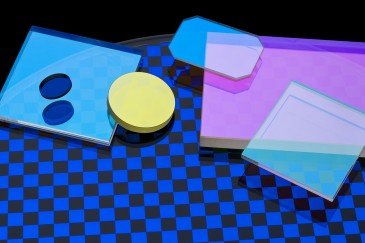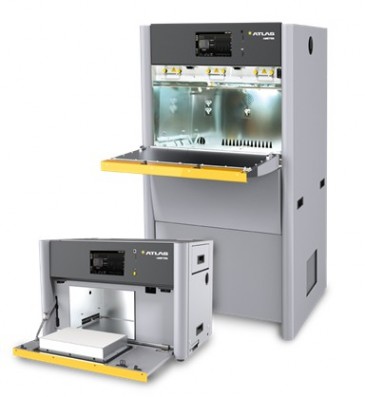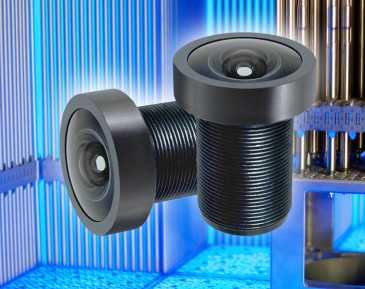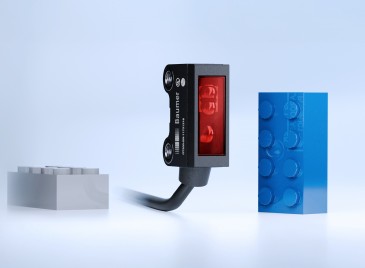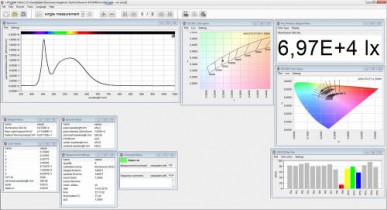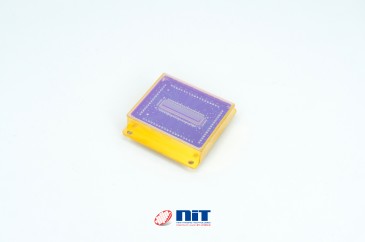
As automotive standards and technologies improve and as features once only available in luxury models are becoming available in standard models, automotive manufacturers are constantly on the lookout for new technologies they can incorporate into future car designs. Technologies such as parking assist, LED lighting, and autonomous driving are becoming more common in standard models, and many car designs are converging in shape and features to achieve the best mileage and comfort for their customers.
Manufacturers are now looking towards innovative technologies that can best assist drivers and allow them to individualize their own cars with custom branding and personalization. Commercial, industrial, and public automotive manufacturers are investigating solutions to increase safety and the quality of their customers’ experiences. At the forefront of these technologies, programmable laser projectors allow users to efficiently illuminate arbitrary locations, draw custom graphics, and display custom, individualized content.

(Left) multiple laser and white light projectors on a car displaying custom branding and visually conveying information to the driver while parking the car, (Right) programmable vector graphics of public transportation schedules, route information, and warnings for frequent stops can all be projected on the ground along with static LED displays to make them more effective.
With the expected proliferation of autonomous vehicles on public roadways, the manufacturers of these vehicles are seeking to project informational and advisory signals to nearby drivers and pedestrians in the interest of safety. This is reinforced by an article on vehicle-to-pedestrian communication for autonomous vehicles [4], wherein the researchers from Duke University similarly found that “a large number of participants, however, believe additional displays will be needed on autonomous vehicles”.

An automated guided vehicle (AGV) operating in a warehouse, equipped with multiple programmable laser projectors to communicate direction of travel and active working region to nearby workers
Off the roadways, autonomous robots and automated guided vehicles (AGVs) are already sharing the floors with human workers at many factories and distribution centers. These systems must be able to efficiently communicate their intended tracks of movement as well as warnings about any potentially hazardous activities to operate safely alongside workers.
Digital signage
Meanwhile, the digital signage industry continues to demonstrate significant interest in high brightness, high contrast projection systems for use in outdoor conditions and other high ambient brightness settings. Many advertising companies are seeking compact, low-power systems that are capable of displaying programmable text, logos, and animations. Diffractive optical element (DOE) based displays have proliferated in related uses in entertainment lighting and digital signage market due to their low cost and relatively high brightness – however their content is static, pre-determined at the time of DOE manufacturing which does not ultimately address the market need. Advertisers seek to convey up-to-date, programmable content to attract customers and generate leads. Furthermore, programmable lighting solutions can be seamlessly integrated with cameras and other sensors and thus allow for a level of interaction that generates engagement from passers-by and potential customers.

A restaurant employing programmable laser projectors to display specials, prices, and limited time offers. Bright, high contrast laser projectors can be used to draw attention and engage potential customers.
For several years, manufacturers and product developers have been confined to experimentation with existing DLP-based or pico-projector-based solutions. Compact micro- and pico-projectors have come a long way over the last decade, and there are a number of relatively low-cost products in the market. However, manufacturers quickly find that these projectors are ultimately invisible in realistic settings and situations, given their very low brightness and contrast. In fact, these technologies are suitable only for very dark ambient and short distance projection. This leaves many of these demands fully unsolved as visibility and contrast ultimately are the top requirement in these markets while adding size, power, and heat is not an option.
High-brightness laser projection technology begins in 2005

(Left) The high contrast windshield display system (“WDS”), developed by Mirrorcle Technologies in 2007 for a major automotive manufacturer. (Right) A Head-Up-Display (HUD) using a 405nm laser-based Scan Module illuminating a phosphor target with different color regions. This system is a product of the 2015 award-winning paper describing high brightness HUDs.
As part of the 2005-2007 windshield display system (“WDS”) project for a major automotive manufacturer, Mirrorcle Technologies developed the first laser projection display that utilized vector graphics to achieve highest brightness and visibility in varied environments. Namely, they were tasked with investigating the option of displaying content directly on the car’s windshield which no other methodology could achieve with reasonably high contrast.
The team at Mirrorcle leveraged their gimbal-less dual axis MEMS mirrors as a key component in the system [1]. This initial prototype achieved exceptional brightness and an incredibly wide projection angle (100° x 100° degrees). Owed to the extremely high bandwidth of the MEMS mirror, the laser beam could be used to project the desired content efficiently by tracing out the content only where needed, at flicker-less refresh rates. As a result, relatively modest laser power could achieve a high contrast display. Due to the nature of the projected content being vector graphics, the optical distortions from the wide-angle lens were easily corrected via software by applying mathematical transformations. The software allows content to be projected onto any type of surface (flat, curved, etc.) and be compensated for most angles of incidence.
After further improvements in designs and manufacturing, Mirrorcle presented an updated laser-phosphor based HUD system with multiple colors, while still achieving the high contrast and visibility. The new HUD had reductions in size, weight, power consumption and cost, with new capabilities like bluetooth communication added [2]
Vector graphics laser projection (VGLP) architecture is fully defined

This technology has since evolved into the Vector Graphics Laser Projection (VGLP) Architecture, combining a full technology stack of software, electronics, and optical laser beam-steering and modulation solutions to enable fully programmable and re-configurable laser projection and display of bright, high-contrast graphic content on a variety of surfaces.
The architecture optimizes the performance of lasers and Mirrorcle’s fastest gimbal-less dual-axis MEMS mirrors to achieve the highest “wall-plug power to visibility” efficiency. A critical feature of the architecture is to utilize lasers of modest optical power at very high duty cycles and to deliver all available illumination to the desired vector graphics and image, and not to spread it by raster scanning over a wide area as in typical pico-projectors or DMD-based (DLP) displays. For example, if we seek to project a real-time clock using DLP or picoprojector technology onto the ground, only a few thousand pixels will be illuminated out of ~1 million pixels available. Thus only a few percent of the available brightness is utilized and projected to the target area, which results in very low illuminance images with practically no contrast. In the case of DLP, the remaining >95% of the pixels direct the generated light to a light/heat dump. In the case of VGLP, the light is directed only to the few thousand ON pixels, meaning that >95% of the available brightness is delivered to the content. Light is only generated as needed, and delivered only to areas of interest toward highest contrast.
At the bottom the VGLP stack, the Scan Module integrates a gimbal-less dual-axis MEMS mirror with a laser source(s), beam shaping, and wide-angle projection (scanning) optics in a compact housing. The projection optics can be adapted to practically any field of view. One layer above, a compact laser driver and MEMS driver electronics efficiently power the Scan Module.
MEMS controller
The MEMS Controller is a subsystem that is responsible for all control and communication between the software layer at the top, and the MEMS mirror at the bottom. The Controller’s firmware has a proprietary architecture which allows for many methods of controlling the system.
The MEMS Controller’s firmware communicates with an extensive, multi-platform application programming interface (API) that is tuned to most optimally utilize the bandwidth of the MEMS mirror and the power of the laser described in more detail in [3]. This software interfaces with the user with his or her target output and facilitate the conversion of general “signage” inputs to an optimized vector graphics scan.
Thus, the API is implemented into an interactive and dynamic platform and is made as flexible as possible by allowing a variety of ways to import signage content from third party software, scripts, ILDA files, etc. The starting point of the displaying process is the media (image, symbol, graphic) which the user wishes to project. This content can originate from photos, can be sketched on a tablet, or can be streamed from a video real-time converted to vector graphics.

(Left) An indoor comparison of multiple projection technologies at 2m distance: A: 32 Lumen Scanning MEMS PicoProjector, B: 100 Lumen DLP-based Mini Projector, C: ~6 Lumen PLS, D: ~6 Lumen green Playzer. (Right) outdoor/cloudy daytime comparison of A, D and E (~6 Lumen red Playzer) projected onto road from 1m height
The VGLP architecture boasts the highest brightness and contrast at the lowest power consumption of currently available laser projection technologies. As a result, Mirrorcle’s VGLP technology offers display systems the highest contrast and brightness – enabling visibility in indoor and outdoor settings.
Playzer – pocket-sized programmable laser projector
Mirrorcle has developed a pocket-sized programmable vector graphic laser projector, called Playzer, to demonstrate the capabilities of the VGLP architecture. It consists of a MEMS mirror-based Scan Module, Controller electronics, Software API, and applications in Windows, Android, and Linux. Playzer is a compact solution for displaying graphics in a multitude of environments, both outdoor and indoor.

(Left) Boxed version of the Playzer (PZ-01G), a pocket-sized, programmable laser system implementing the VGLP Architecture. (Right) Full color RGB Playzer system displaying content drawn on an Android-based application.
The latest development in VGLP technology is the RGB Playzer. The RGB Playzer offers unique full-spectrum color capability by taking advantage of three discrete laser diodes: red, green, and blue. These free space three diodes are optically assembled with MEMS mirror and optics into the Mirrorcle-designed Scan Module.
With interest from the automotive industry in mind, Mirrorcle has demonstrated robustness of the MEMS mirror in shock, vibration, temperature and lifetime with anecdotal testing, and is in the process of fully qualifying the mirror for Automotive Electronics Council (AEC) specifications. Mirrorcle is also working with IC manufacturers to advance the driver design to meet AEC qualifications on the controller and driver electronics. Mirrorcle has also established volume manufacturing lines for MEMS mirrors and Scan Modules, with current capabilities of >1000 devices / month, with plans to ramp up production to larger volumes within 6 months.
Written by Daniel Lovell, Veljko Milanovic, Abhishek Kasturi, Mirrorcle
[1] Veljko Milanović, Kenneth Castelino, Daniel McCormick, "Highly Adaptable MEMS-based Display with Wide Projection Angle, " 2007 IEEE Int. Conf. on Microelectromechanical Systems (MEMS'07), Kobe, Japan, January 25, 2007
[2] Veljko Milanović, Abhishek Kasturi, Volker Hachtel, "High brightness MEMS mirror based head-up display (HUD) modules with wireless data streaming capability, " SPIE 2015 OPTO Conference, San Francisco, CA, February 1, 2015
[3] Abhishek Kasturi, Veljko Milanovic, Frank Hu, Hong Joo Kim, Derek Ho, Daniel Lovell, "MEMS Mirror Module for Programmable Light System, " SPIE 2019 OPTO Conference, San Francisco, CA, February 3, 2019
[4] Clamann, Michael & Aubert, Miles & Cummings, Mary. (2017). “Evaluation of Vehicle-to-Pedestrian Communication Displays for Autonomous Vehicles.”































 Back to Features
Back to Features
